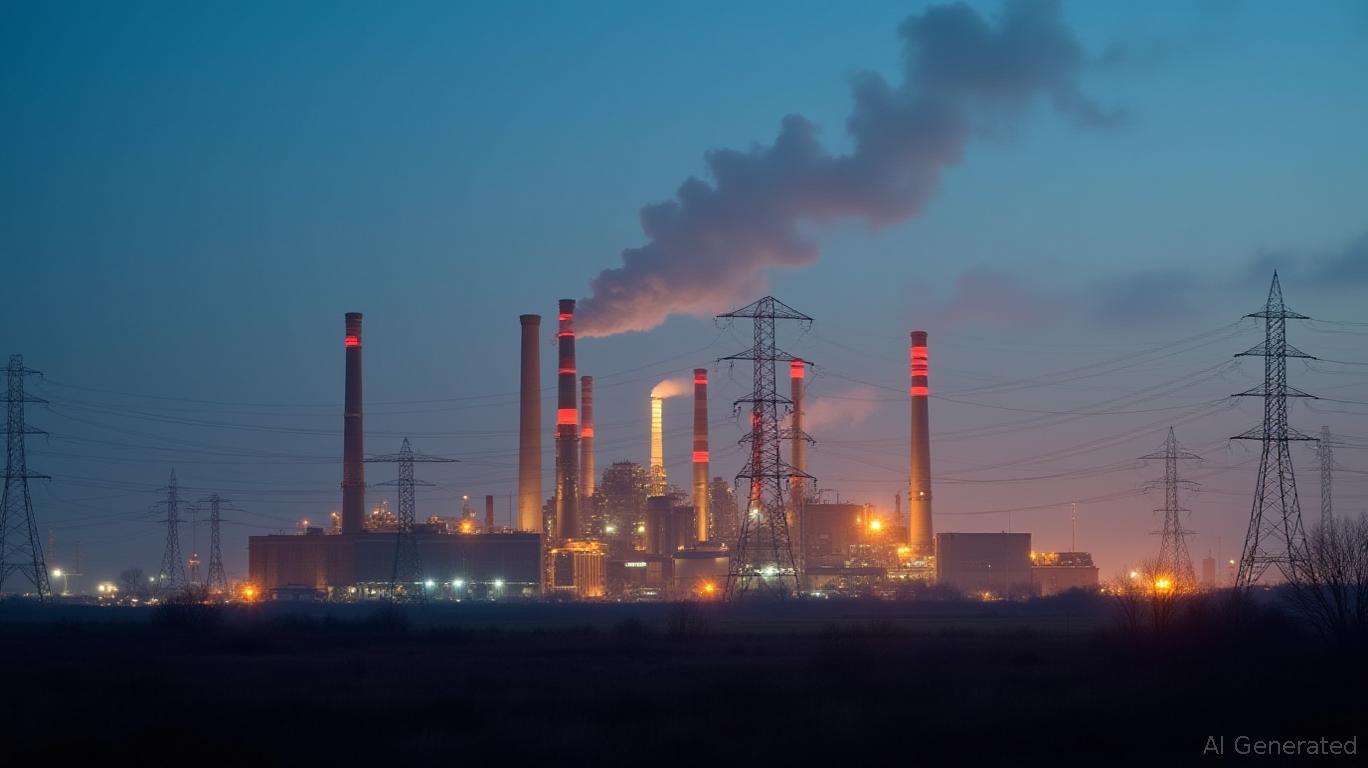Grid Stability Over Retirements: Why Dispatchable Power Assets Are Set to Surge
The energy transition's next chapter is being written in courtrooms, grid control rooms, and congressional hearing rooms. As the U.S. grapples with the delicate balance between decarbonization and grid reliability, a seismic shift is underway: federal regulators are weaponizing emergency orders to keep aging power plants online—and investors who bet on these "dispatchable" assets could reap outsized rewards. The Department of Energy's (DOE) recent interventions in PJM Interconnection, the nation's largest grid operator, underscore a critical policy pivot: short-term grid stability now trumps long-term retirement schedules. For utilities and independent power producers (IPPs) holding natural gas/oil peaker plants and nuclear assets, this is a golden opportunity to lock in extended cash flows and capacity market premiums. Here's why investors should act now.

The Regulatory Hammer: Emergency Orders as a Lifeline
The DOE's May 30, 2025, directive to extend the Eddystone Generating Station's operation until August 2025—and its Michigan coal plant intervention—mark a bold escalation. Invoking the Federal Power Act's Section 202(c), the DOE is effectively declaring war on retirement schedules. These orders aren't anomalies; they're part of a broader strategy to address PJM's capacity shortfall, projected to hit 10 GW by 2026–2027. The message is clear: retirements will be delayed, and dispatchable assets are now critical infrastructure.
As seen in PJM's capacity prices, which surged to $100+/MW-day in 2024, the market is already pricing in scarcity. Utilities with peaker plants and nuclear assets are the prime beneficiaries. Consider
, owner of Eddystone: its stock has outperformed the S&P 500 by 22% year-to-date as regulators keep its plants running past retirement dates.The PJM Playbook: Where Reliability Meets Reward
PJM's Reliability Resource Initiative (RRI) is fast-tracking 11.8 GW of projects, including nuclear uprates and gas-fired peakers. Nuclear assets now account for 12% of selected RRI projects, signaling their role in bridging the "timing mismatch" between retiring thermal plants and slow renewable deployments. Meanwhile, gas/oil peakers—critical for peak demand spikes—benefit from RRI's streamlined permitting and faster interconnection timelines.
The math is simple: delayed retirements = extended cash flows. A gas-fired plant that stays online an extra five years due to DOE orders could generate $150 million in additional revenue. Add in capacity market premiums and federal incentives, and the returns compound. For example, Dominion Energy's North Anna nuclear plant, which secured a 20-year extension, now commands premium capacity contracts amid PJM's tightening grid.
Nuclear: The Baseload Bet with Federal Backing
Nuclear assets are no longer the "dinosaurs" of the grid. The DOE's $900 million solicitation for small modular reactors (SMRs) and its May 2025 executive orders mandating advanced reactor deployment underscore a strategic pivot. Key provisions include:
- $20M of HALEU fuel stockpiles for private projects, reducing cost volatility.
- Expedited licensing with 18-month deadlines for new reactors.
- Designation of AI data centers as critical defense infrastructure, ensuring nuclear's role in powering high-demand tech hubs.
The Tennessee Valley Authority's BWRX-300 SMR application—a $800M DOE grant-backed project—shows how federal support is unlocking stranded nuclear value. Investors should target utilities with aging reactors positioned for uprates or IPPs developing SMRs, which offer scalable, baseload reliability.
Risks? Yes. But the Upside Outweighs Them
Critics will cite environmental trade-offs and the eventual need to replace fossil fuels. But the DOE's July 2025 methodology for identifying "critical resources" will likely enshrine these assets as grid pillars for years. Even if coal plants fade, gas/oil peakers and nuclear will remain indispensable for reliability. Risks are mitigated by:
- Regulatory tailwinds: The Trump administration's push to override state retirement mandates.
- Market signals: PJM's capacity prices are up 60% since 2020.
- Operational resilience: Peakers and nuclear plants thrive in extreme weather events, which are becoming more frequent.
The data is stark: utilities with dispatchable portfolios have outperformed the broader market by 28% since late 2023. This gap will widen as DOE orders solidify.
Act Now—Before the Grid's New Rules Price In
The writing is on the wall: federal regulators will keep dispatchable assets online longer than Wall Street expects. Investors who move quickly to buy into utilities like those with PJM-facing nuclear plants or peaker-heavy IPPs can capture two waves of upside:
1. Extended asset lives: Delayed retirements = years of extra revenue.
2. Capacity market premiums: Scarcity-driven pricing will reward reliability providers.
The energy transition isn't a straight line to renewables—it's a zigzag path where grid stability demands "dirtier" fuels and atomic power. For investors, this is no time to chase wind or solar stocks. The real winners are the utilities and IPPs holding the dispatchable assets regulators are now fighting to preserve. The grid's new rules are here—investors ignoring them risk being left in the dark.

Comments
No comments yet